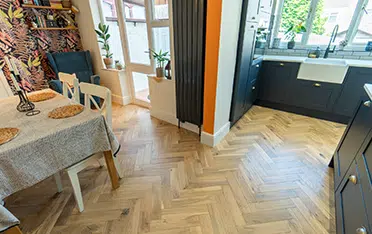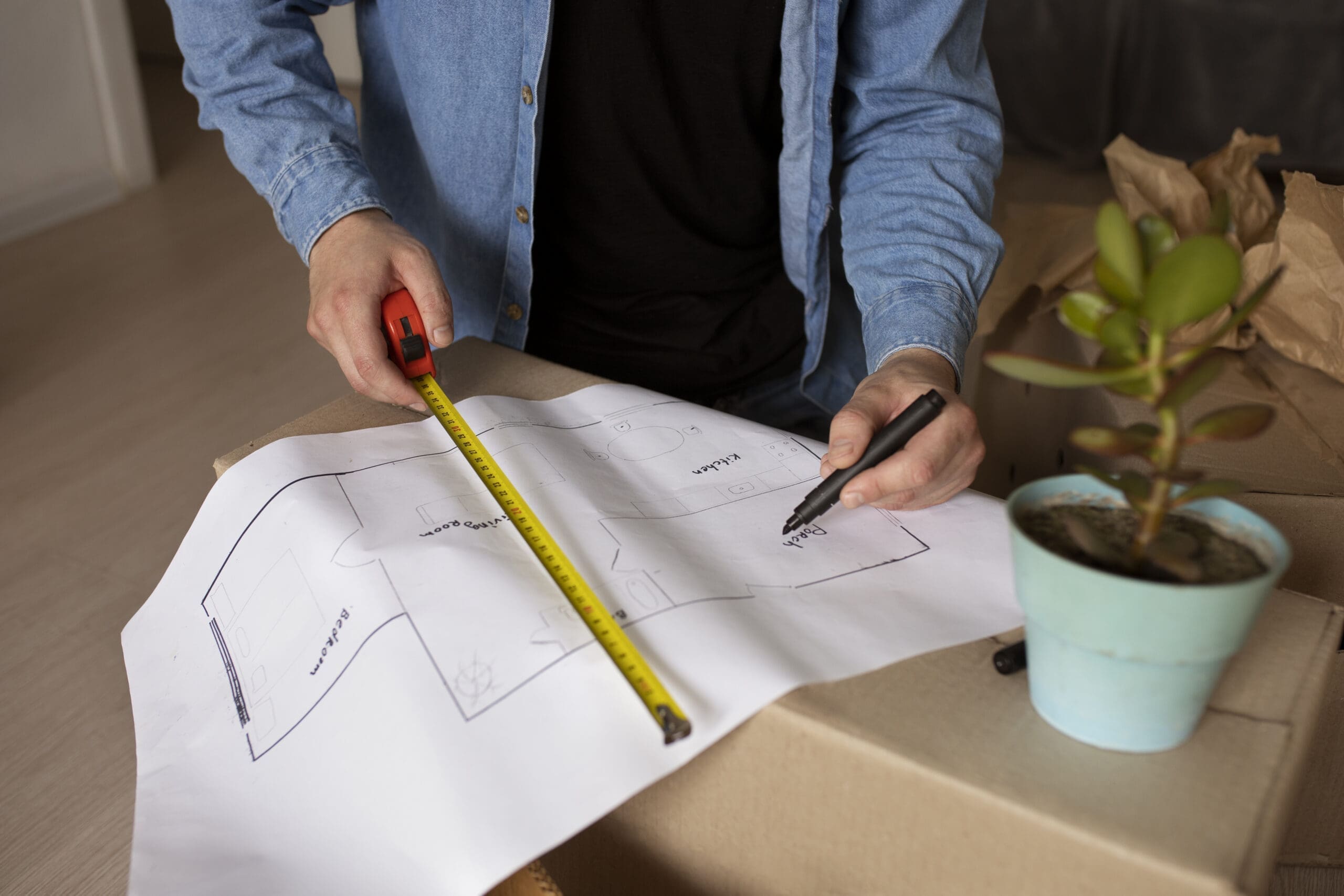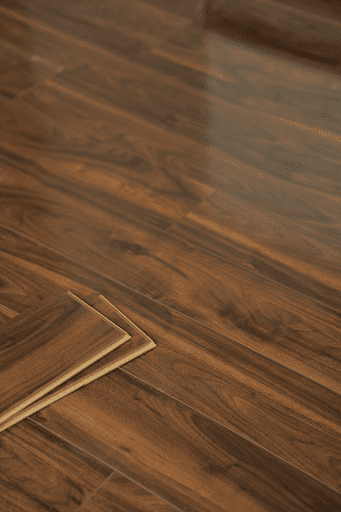Water stains on wood floors can be frustrating, but they’re not always permanent. With the right techniques, you can lift stains and restore your flooring’s original beauty. Follow this step-by-step guide to effectively remove water stains from floors and prevent future damage.
Understanding Water Stains on Wood Floors
Water stains on solid wood floors occur when moisture seeps into the surface, leaving behind a white or dark mark. White stains indicate that water has only penetrated the finish, while a dark stain means that the moisture has reached deeper into the wood. These stains are often caused by spills, pet accidents, high humidity, or prolonged water exposure. Understanding the type of stain helps determine the best removal method on how to prevent future damage.
Materials You’ll Need to Remove Water Stains from Wood Floors
For effective water stain removal on solid wood flooring, having the right materials and tools is essential. Below is a list of items to help DIYers tackle different types of water stains on wood floors.
Basic Cleaning and Drying Tools
- Soft microfiber cloths – For wiping, buffing, and drying surfaces without scratching the wood.
- Hair dryer – Helps evaporate moisture from fresh water stains.
- Vacuum or broom – Keeps the area clean before applying treatments.
DIY Cleaning Solutions
- Baking soda – A natural, non-abrasive cleaner for lifting light water stains.
- White vinegar – Helps break down surface-level stains, especially white or hazy marks.
- Olive oil – Conditions and restores the wood’s natural shine after treatment.
- Water – Used sparingly to create pastes for stain removal.
Protective and Sanding Materials (For Deep Stains)
- Fine and medium-grit sandpaper (120–220 grit) – Smooths out deep stains after sanding.
- Wood stain or finish – Restores the treated area to match the surrounding flooring.
- Soft-bristle brush or applicator – For applying wood stain or protective finishes.
Prevention and Maintenance Tools
- Water-resistant wood sealant – Provides long-term protection against moisture.
- Furniture pads and coasters – Prevent condensation damage from drinks and furniture.
- Rugs or mats – Help absorb moisture in high-risk areas.
- Dehumidifier – Regulates humidity to prevent excess moisture buildup.
Step-by-Step Methods to Remove Water Stains from Wood Floors
Method 1 – Using a Hair Dryer to Remove Water Stains

Using a hair dryer to remove water stains is a simple and effective way to evaporate trapped moisture, similar to using an iron. This method works best on fresh, surface-level stains. Follow these steps to safely eliminate water stains with a hair dryer:
- Set the Hairdryer to Low Heat
- Avoid using high heat, as it could damage the wood or finish.
- Keep the dryer at a moderate temperature to gradually evaporate the trapped moisture.
- Hold the Hairdryer a Few Inches Above the Stain
- Keep it about 6–12 inches (15–30 cm) away from the stain.
- Move it in a circular motion to evenly distribute heat.
- Continue Drying for a Few Minutes
- Check the stain every minute or so.
- As the moisture evaporates, the stain should begin to fade.
- Wipe the Area with a Soft Cloth
- Once the stain has faded, wipe the surface with a dry microfiber cloth.
- This helps remove any remaining moisture or residue.
Method 2 – Using Baking Soda and Water
Using baking soda and water to remove water stains from wood flooring is a natural, non-abrasive method that works best for light stains. For deeper stains, you may need to repeat the process or try a different approach.
- Prepare the Paste
- Mix 1 tablespoon of baking soda with a few drops of water to create a thick paste.
- Apply the Paste
- Using a soft cloth or sponge, gently rub the paste onto the stain in a circular motion.
- Let It Sit
- Allow the paste to sit on the stain for a few minutes, but do not let it dry out completely.
- Wipe the Area
- Use a slightly damp cloth to wipe away the paste.
- Be careful not to use too much water, as it can cause another stain while trying to remove the original one.
- Dry Thoroughly
- Immediately dry the area with a soft towel to prevent moisture from seeping into the wood.
Method 3 – Applying Vinegar and Olive Oil

Applying vinegar and olive oil is a common DIY solution for surface stains. It’s easy, affordable and a popular method with homeowners. It’s ideal for white or hazy stains caused by moisture trapped in the finish.
- Prepare the Mixture
- In a small bowl, mix equal parts white vinegar and olive oil.
- Apply the Solution
- Dip a soft cloth into the mixture and gently rub it onto the stain using circular motions.
- Let It Sit
- Allow the solution to sit on the stain for 5–10 minutes to help break it down.
- Buff the Area
- Using a clean, dry cloth, buff the wood to remove excess oil and restore its natural shine.
- Repeat if Necessary
- If the stain is still visible, repeat the process until it fades completely.
Method 4 – Sanding for Deep Water Stains

Sanding for deep water stains is necessary when moisture has penetrated the wood, causing dark brown or black discolouration. It’s best for severe damage from prolonged water exposure when surface treatments fail. This method removes the stained layer but requires refinishing to restore the wood’s appearance.
- Assess the Stain
- Ensure the stain is deep and cannot be removed with other methods before sanding.
- Choose the Right Sandpaper
- Start with fine-grit sandpaper (e.g., 180–220 grit) to avoid damaging the wood.
- For tougher stains, use medium grit (120–150 grit) first, then switch to finer grit for a smooth finish.
- Sand the Stained Area
- Gently sand in the direction of the wood grain to avoid scratches.
- Apply light pressure and check progress frequently.
- Clean the Surface
- Wipe away dust with a damp cloth and allow the wood to dry completely.
- Refinish the Area
- Apply wood stain or finish to match the surrounding floor.
- Let it dry, then buff for a seamless look.
Preventing Future Water Stains on Wood Floors
Preventing future water stains on wood floors requires simple but effective habits that help protect against moisture damage. Follow these steps to keep your floors looking their best:
- Wipe Up Spills Immediately – Prevent moisture from seeping into the wood by cleaning spills right away.
- Use Rugs and Mats – Place them in high-risk areas like entryways, kitchens, and near sinks to absorb excess moisture.
- Apply a Water-Resistant Sealant – Use a polyurethane finish or wood sealant to add a protective layer.
- Use Coasters and Furniture Pads – Prevent water rings and condensation damage from drinks and furniture.
- Control Humidity Levels – Keep indoor humidity between 35–55% with a dehumidifier to prevent excess moisture.
- Clean Floors Properly – Use a damp (not wet) microfiber cloth for regular cleaning to avoid water damage.
- Check for Leaks Regularly – Inspect plumbing, windows, and appliances to catch leaks before they cause stains.
When to Call a Professional for Water Damage Repair
Call a Professional for Water Damage Repair when the damage is too severe for DIY fixes or poses a risk to your home’s structure. Here are signs that expert help is needed:
- Dark or Black Stains – These indicate deep water penetration or possible mould growth requiring professional treatment.
- Buckling or Warping Floors – If the wood planks are lifting, cupping, or warping, structural repairs may be necessary.
- Persistent Moisture or Mold – If stains keep reappearing, hidden moisture or mould may need specialised drying and treatment.
- Extensive Water Exposure – Flooding, burst pipes, or major leaks can cause widespread damage that requires expert restoration.
- Unpleasant Odors – A musty smell could signal mould, mildew, or rotting wood that needs professional assessment.
- Hidden or Widespread Damage – If the full extent of the damage isn’t clear, professionals can inspect and prevent long-term issues.
FAQ
Why does my wood floor have water stains?
Water stains occur when moisture seeps into the wood or gets trapped in the finish. White or hazy stains indicate moisture is in the top layer, while dark stains mean water has penetrated deeper into the wood, often due to prolonged exposure.
How do I get white water stains out of wood floors?
White water stains are surface-level and can often be removed using a hair dryer to evaporate trapped moisture, a baking soda paste to lift the stain, or a mixture of vinegar and olive oil to break down the stain while conditioning the wood.
Can you remove water stains from wood floors without sanding?
Yes, surface stains can be removed using DIY methods like a hair dryer, baking soda, toothpaste, or vinegar and olive oil. Sanding is only necessary for deep, dark stains that do not fade with other treatments.
What’s the best product to remove water stains from wood floors?
The best product depends on the stain type. White stains can be treated with a hair dryer, baking soda, or vinegar and olive oil, while dark stains may require hydrogen peroxide, wood bleach, or sanding and refinishing.
How can I prevent water stains on wood floors?
To prevent water stains, wipe up spills immediately, use rugs and mats in high-risk areas, apply a water-resistant sealant, and use coasters and furniture pads to prevent condensation damage. Maintaining indoor humidity levels between 35–55% can also help prevent moisture buildup.
Can water stains cause long-term damage to wood floors?
Yes, if left untreated, water stains can lead to warping, mould growth, and wood rot, which weaken the flooring and may require costly repairs.
How do I remove dark water stains from wood floors?
Dark stains indicate deep water penetration and may require treatment with hydrogen peroxide or wood bleach to lighten the stain. In severe cases, sanding and refinishing may be necessary. If the damage is extensive, professional repair services may be the best option.
Conclusion
Water stains on wood floors can be frustrating, but with the right approach, they don’t have to be permanent. Whether tackling fresh, surface-level stains with a hair dryer or vinegar, or addressing deep-set stains through sanding, there are effective solutions for every situation. Taking proactive steps—such as sealing floors, maintaining proper humidity levels, and cleaning spills immediately—can prevent future damage and extend the life of your flooring. However, if stains persist, or if you notice warping, mould, or structural issues, it’s best to seek professional help before the damage worsens.
Contact Us
Visit our Website to explore our top-rated wood floor cleaners and care kits! If you’re looking for more information or would like a free consultation, visit our showrooms or Contact Us online!
Halesowen
214A Dudley Road. Halesowen, Birmingham, B63 3NJ
0121 274 8575
Monday – Friday: 9AM – 6PM | Weekends: 10AM – 4PM
Wolverhampton
317 Penn Rd, Wolverhampton, West Midlands, WV4 5QF
01902 836666
Monday – Friday: 9AM – 6PM | Sat: 10AM – 4PM | Sun: Closed
info@flooringsurgeons.co.uk
fitting@flooringsurgeons.co.uk
customerservices@flooringsurgeons.co.uk









